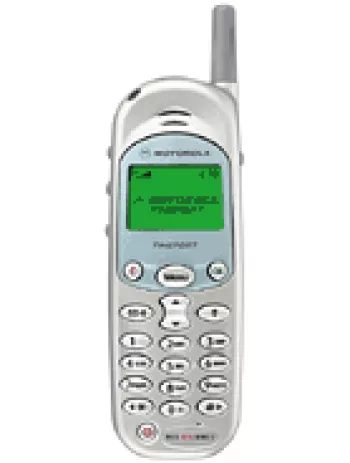
Overview of Motorola L2
The Motorola L2 was announced in early 2005 as a feature phone targeting consumers looking for basic communication functionalities. At a time when mobile technology was rapidly evolving, the L2 embodied simplicity and essential mobile services. While it did not offer advanced features like a camera or multimedia capabilities, it appealed to users who prioritized voice calling and messaging.
Network & Connectivity
The Motorola L2 operated on GSM technology with 2G bands covering GSM 900, 1800, and 1900 MHz. It supported GPRS Class 10 for data connectivity, although it did not have EDGE capabilities. Additionally, Bluetooth version 1.2 was available for basic wireless data transfer, allowing users to connect with other Bluetooth-enabled devices for file sharing.
Launch and Availability
The device was officially announced in the first quarter of 2005. However, the model has since been discontinued, with the rapid advance of mobile technology surpassing its capacities. During its availability, it served well users who required a no-frills mobile phone delivering reliable voice and text communication.
Design and Build
The Motorola L2 was designed to be compact and lightweight, with dimensions measuring 113 x 49 x 11 mm and a weight of only 86 grams. The phone included a Mini-SIM slot and was finished in a distinctive color named Diamond Dust. Despite its simple design, it was sleek and easily portable, fitting comfortably in pockets and small bags.
Display Features
The phone featured a 1.8-inch CSTN display capable of showing 65K colors. Although small, the screen had a resolution of 128 x 160 pixels with a density of 114 ppi. The screen-to-body ratio was approximately 18.4%, which, at the time, was adequate for viewing contacts, text messages, and menu navigation.
Memory Capacity
Internally, the Motorola L2 offered 10MB of storage space, which was considered modest even during its release era. There was no card slot for expandable storage, limiting users to the internal memory. The phonebook could store up to 500 contacts, and the device was capable of maintaining call records for 10 dialed, 10 received, and 10 missed calls.
Sound and Audio
With no loudspeaker or 3.5mm headphone jack, the Motorola L2 delivered sound through downloadable polyphonic and MP3 ringtones. Users had the option of downloading additional ringtones and utilizing a vibration alert mode for notifications.
Communication Features
The L2 supported basic messaging services, including SMS, EMS, MMS, Email, and Instant Messaging. For web browsing, it included a WAP 2.0/xHTML browser. The phone also supported Java MIDP 2.0, allowing users to download and run Java applications and games, enhancing its otherwise limited feature set.
Battery Life
Powered by a removable Li-Ion 820 mAh battery, the Motorola L2 offered a stand-by time of up to 310 hours and a talk time of up to 4 hours. Despite the relatively small battery, the phone's low power consumption ensured that users could enjoy extended usage without frequent recharging.
Miscellaneous Features
Apart from its primary functionalities, the Motorola L2 did not come equipped with sensors or positioning technology. It lacked advanced multimedia features, making it less appealing to the tech-savvy consumer but suitable for users who required a reliable communication device.
Conclusion
The Motorola L2 was a product of its time, offering essential mobile features wrapped in a compact, well-designed package. It catered to users with basic needs, focusing on communication via voice calls and messaging. Although it has become obsolete in the context of modern smartphones, it remains a testament to Motorola's ability to produce functional and user-friendly mobile devices.
Main Features of Motorola L2
- GSM Technology with tri-band support (GSM 900 / 1800 / 1900)
- Compact and lightweight design (113 x 49 x 11 mm, 86 g)
- 65K colors CSTN display
- Bluetooth 1.2 connectivity
- Supported messaging types: SMS, EMS, MMS, EMail, Instant Messaging
- WAP 2.0/xHTML Browser
- Java support with MIDP 2.0
- Downloadable games
- Removable Li-Ion 820 mAh battery with up to 310 hours standby and 4 hours talk time
- Internal memory with phonebook support for 500 entries
Motorola L2 Disadvantages
- Lacks EDGE support for faster data speeds.
- No expandable memory card slot for additional storage.
- Limited internal memory of 10MB.
- No camera available on the device.
- Does not feature a loudspeaker.
- No 3.5mm headphone jack.
- No WLAN (Wi-Fi) connectivity.
- Limited Bluetooth version 1.2.
- Does not support GPS positioning.
- No FM radio feature.
- Uses a proprietary USB connection rather than a standard one.
- Low screen-to-body ratio of approximately 18.4%.
- Display type is CSTN with only 65K colors, offering lower quality visual experience.

View Also
More Phones
All Rights Reserved +14266 Phones © Mobilawy 2025

























